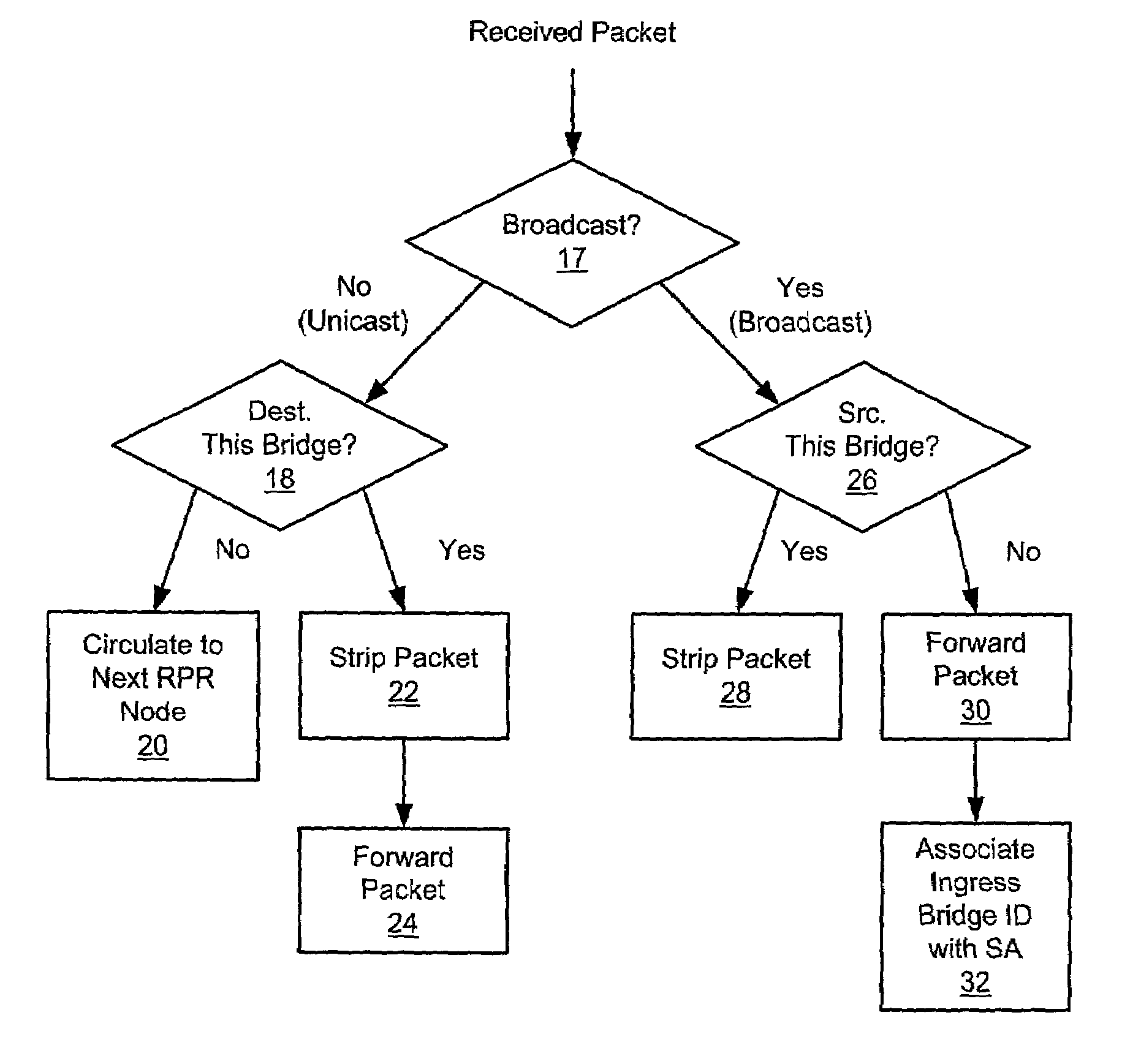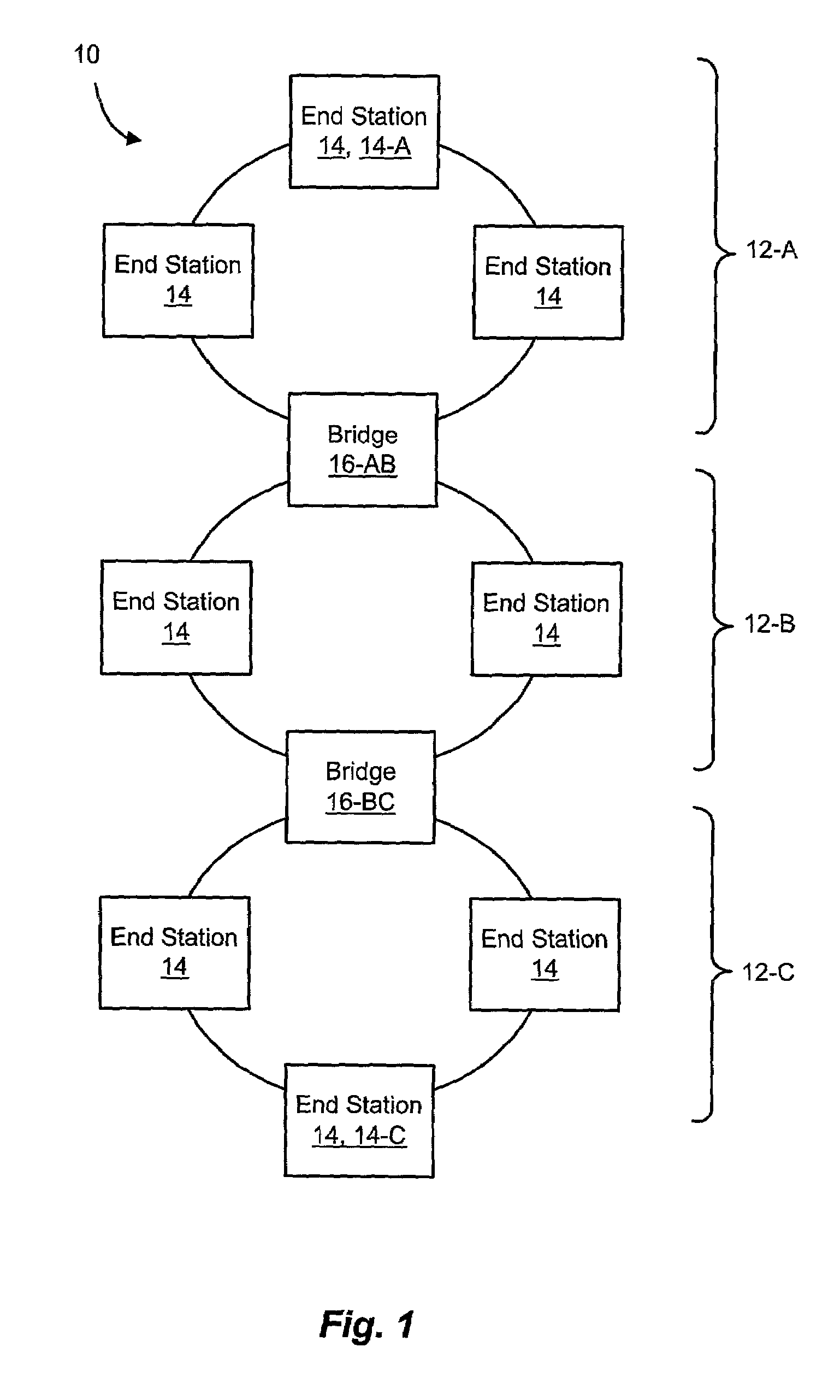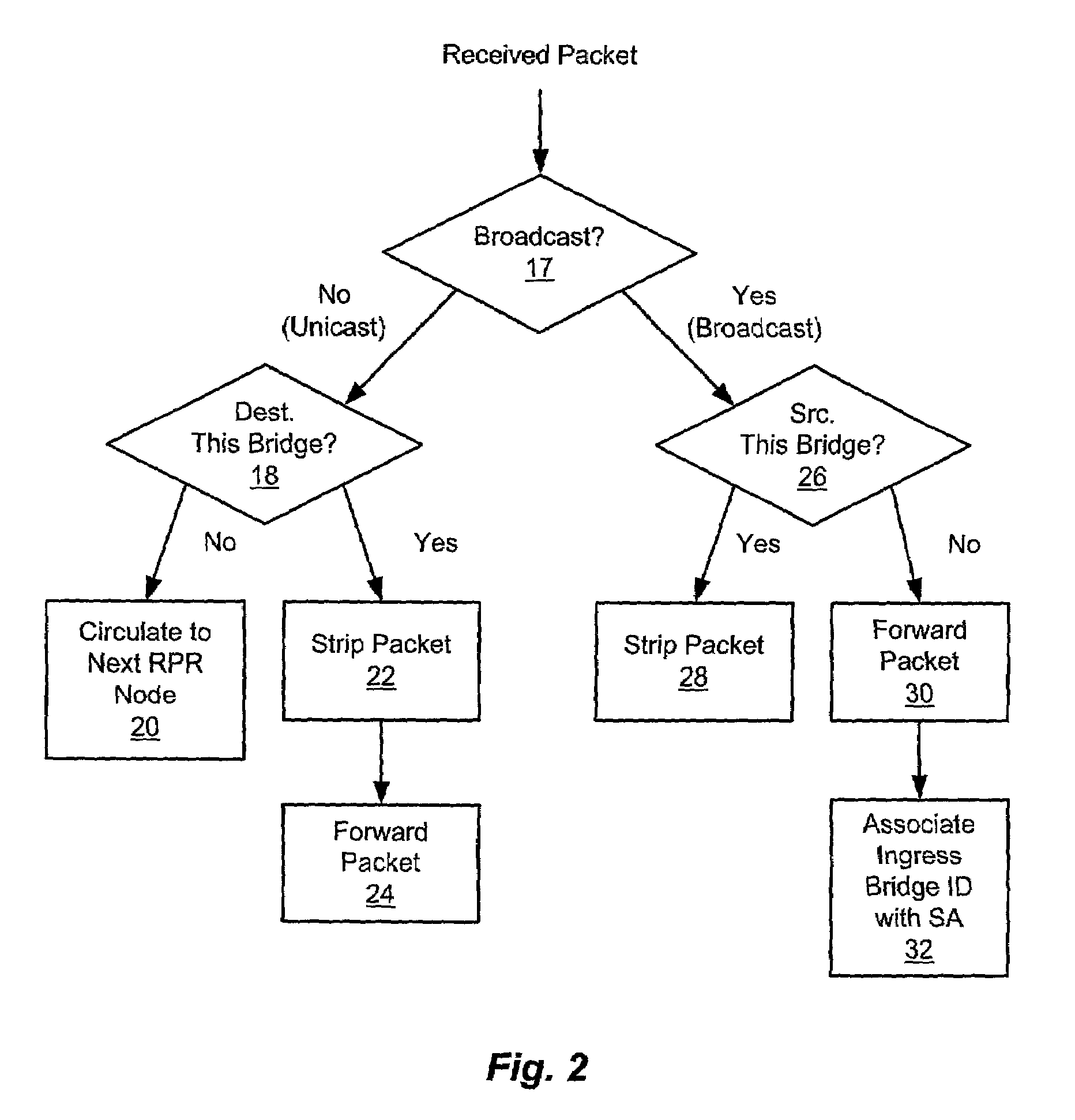Spatial reuse and multi-point interconnection in bridge-interconnected ring networks
- Summary
- Abstract
- Description
- Claims
- Application Information
AI Technical Summary
Benefits of technology
Problems solved by technology
Method used
Image
Examples
Embodiment Construction
[0019]FIG. 1 shows a Resilient Packet Ring (RPR) network 10 including multiple interconnected RPR rings, such as exemplary rings 12-A, 12-B and 12-C. Each ring 12 generally includes multiple RPR nodes, which in FIG. 1 are shown as RPR end stations 14 and bridges 16. The end stations 14 are the ultimate sources and destinations of RPR packets in the network 10. The end stations 14 generally include functionality at higher layers of network operation in addition to their RPR functionality. For example, the end stations 14 may include application-layer functionality such as database or Web serving, or may include lower layer functionality such as network routing. In one embodiment, at least some of the end stations 14 cooperatively provide transparent LAN services to customers connected to external LAN segments (not shown). In such an embodiment, the network 10 provides logical connections among geographically separated LAN segments to create the appearance of one or more homogeneous L...
PUM
 Login to View More
Login to View More Abstract
Description
Claims
Application Information
 Login to View More
Login to View More - R&D
- Intellectual Property
- Life Sciences
- Materials
- Tech Scout
- Unparalleled Data Quality
- Higher Quality Content
- 60% Fewer Hallucinations
Browse by: Latest US Patents, China's latest patents, Technical Efficacy Thesaurus, Application Domain, Technology Topic, Popular Technical Reports.
© 2025 PatSnap. All rights reserved.Legal|Privacy policy|Modern Slavery Act Transparency Statement|Sitemap|About US| Contact US: help@patsnap.com



